One of my ‘when I get time’ projects has been doing up a digital version of the sword pyramids from Sutton Hoo. They’re a set of small (18x12mm) pyramid fittings associated with the Sutton Hoo sword. Garnet cloisonne in gold, about 600AD.
 The real Sutton Hoo Sword pyramids
The real Sutton Hoo Sword pyramids
I’ve got a client who wants a set of them as cufflinks. It also seems like it’s a good excuse to sit down and force myself to get better with Rhino. The final goal of this is to have them printed for direct burnout and casting in silver, followed up with enamel. I’m including a CAD version of the backing foils, largely to see how far I can push the output printer before it breaks. The backing foils on the original pyramids are .020mm thick gold sheet with a die-struck grid pattern of 4.25 lines per mm. (Or 235 microns, peak to peak.) (Bloody well tiny, in other words.) The output printer promises resolution of 30 microns, so it should have enough resolution to do something meaningful with the grid pattern. I’m not entirely sure the investment can pick it all up, but there’s only one way to find out.
The first step was actually to make a CAD version of the die, and then to create a sheet of ‘digital gold’ (trademark pending, nach.) Rhino has a command that very accurately simulates the effect of die striking that sheet of ‘gold’ into a lead pad, using the aforementioned die. I used that to get the sheet ‘formed’ into something that looks very much like electron microscope photos of the real foils. The ‘foil’ sheet is 18x18mm across, with a mesh of 500X500, for 250,000 control points.
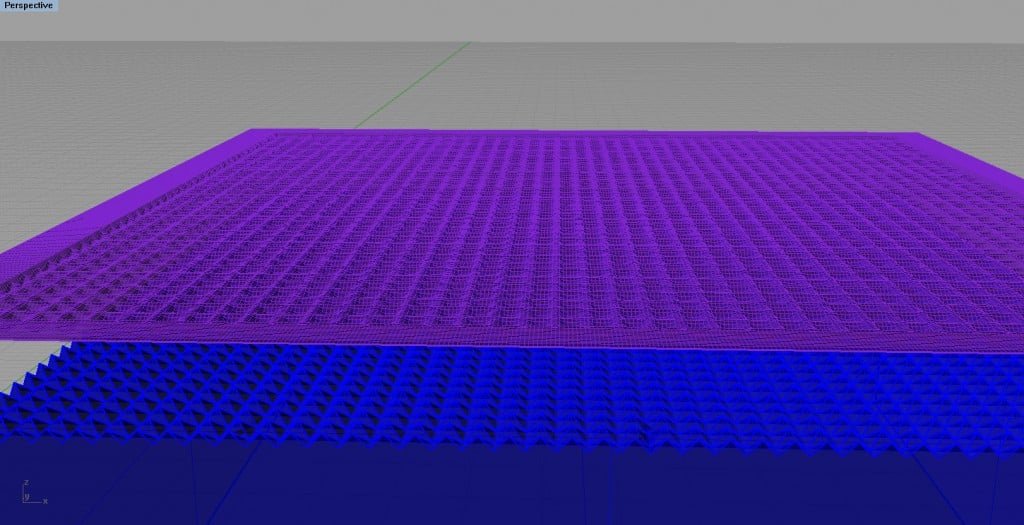 The ‘die’ in blue, with the purple sheet of ‘digital gold’ above it. Each of the line intersections is a control point.
The ‘die’ in blue, with the purple sheet of ‘digital gold’ above it. Each of the line intersections is a control point.
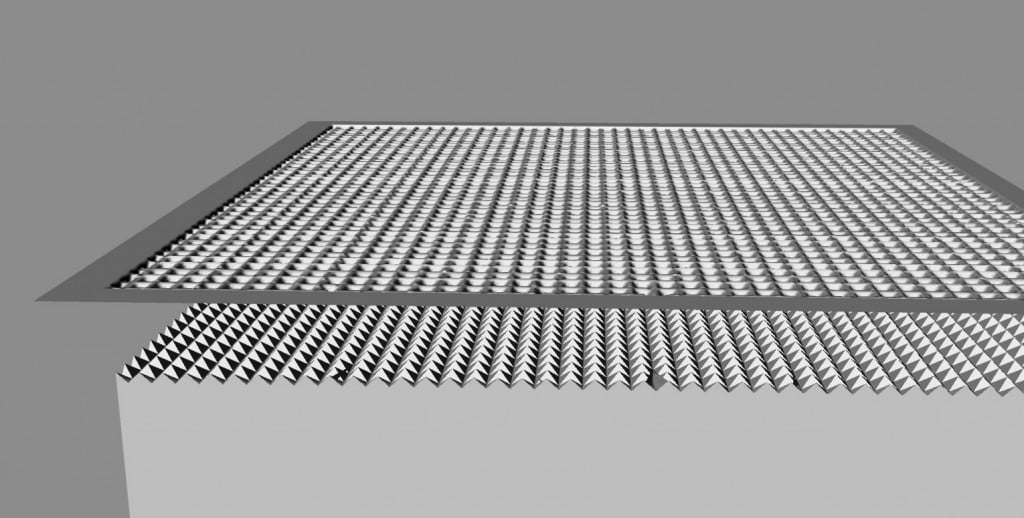 Rendered view of the foil & die. It’s a little easier to see what’s going on here.
Rendered view of the foil & die. It’s a little easier to see what’s going on here.
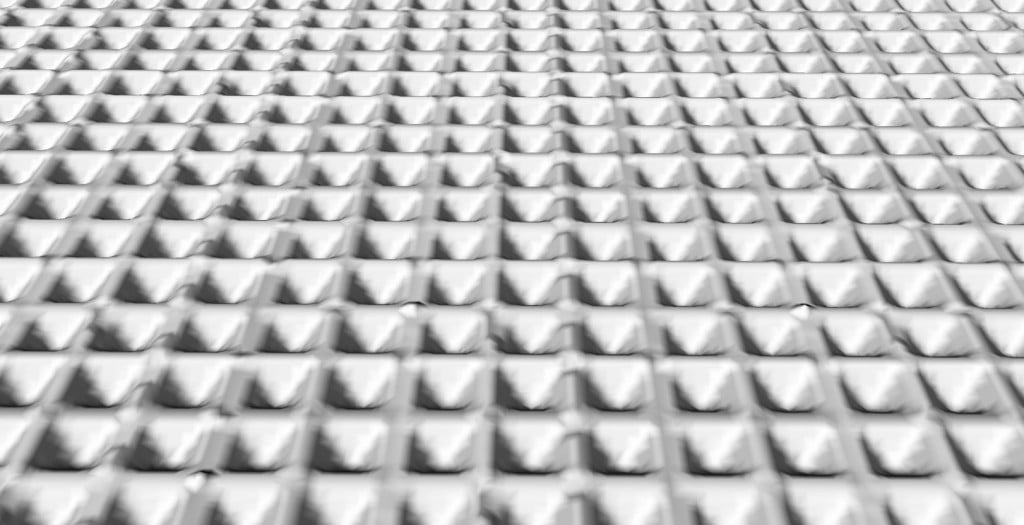 Rendered closeup of the foil. Looks very much like electron micrographs of the real thing. I fussed with the die a bit to add some of the ‘imperfections’ of the real foils.
Rendered closeup of the foil. Looks very much like electron micrographs of the real thing. I fussed with the die a bit to add some of the ‘imperfections’ of the real foils.
In the images above, you can see the die, and the foil produced from it. The foil’s been flipped over, as it was normally used with the die facing side up. I also modified the die slightly to add some of the ‘imperfections’ to the foil. The real foils are almost inhumanly accurate, especially for the time period, but the cutter wasn’t a perfect “V”, so the shape of the grooves in the die isn’t exactly what you’d expect. I made sure to allow for that when I built my die. It doesn’t show at the scale you’re seeing it on the overviews, but it’s there. Whether or not that shows up in the final product is an open question, but I had to try.
The next step was to build the pyramid, and the cells for the garnet cloisonne. The idea was to use copies of the ‘foil’ to form the backs of the cells, so that they’d cast in place, rather than me having to make them up for real after the parts are cast. The foils in the real pieces are sometimes oriented randomly, and sometimes oriented in ways that look deliberately set so that each cell catches the light differently than its neighbor. Since I had the technology, I decided to orient all my cells such that each cell is oriented differently. Won’t know how well that works out until the final castings, but it was worth trying.
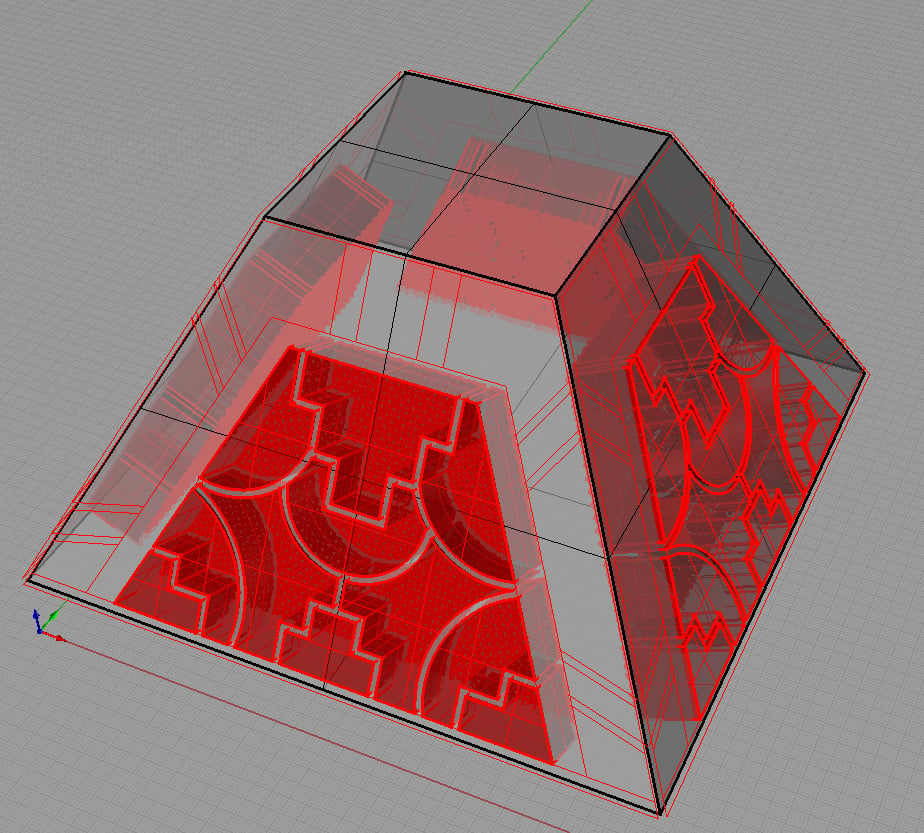 Pyramid with garnet cells inset in red. Note the orientation of the foil grid in the rear of the cells.
Pyramid with garnet cells inset in red. Note the orientation of the foil grid in the rear of the cells.
One advantage of doing a very accurate CAD model is that sometimes, even a digital reproduction can give insight into how the real ones were made. Prior to Staffordshire, very few sword pyramids were known, and it was difficult to figure out exactly how they were made. The Sutton Hoo pyramids are a miracle of cryptic stone setting, and they’re still holding fast to their secrets after 1400 years in the dirt. They remain in pretty much perfect shape, so it’s impossible to be sure exactly how the stones in the corners were set. I have my theories, which I believe to be correct, but until the full Staffordshire information comes on stream, nobody but those three lovely ladies in Birmingham will know for sure. Meanwhile, I discovered something once I got to this stage in setting up the model.
None of the cells in the Sutton Hoo pyramids are loose, so no one knows exactly how deep they are. So I guessed, at 1.6mm. Once I had all four sets of cloisonne cells in place, (for something north of one million control points.) I noticed that the 1.6mm depth of the cells matched fairly well with the thickness of the edge stones. (Picked out in red on the image) The depth isn’t a perfect match, because I was guessing, but looking at the depth of the stones (in yellow) makes me suspect that the original cloisonne work was done on panels that were set up so that they mate at the bottom of the edge stones, and the edge stones make up the bulk of the corners. If I’m right, the depth of the cells on the real pyramids can be inferred by measuring the thickness of the edge stones.
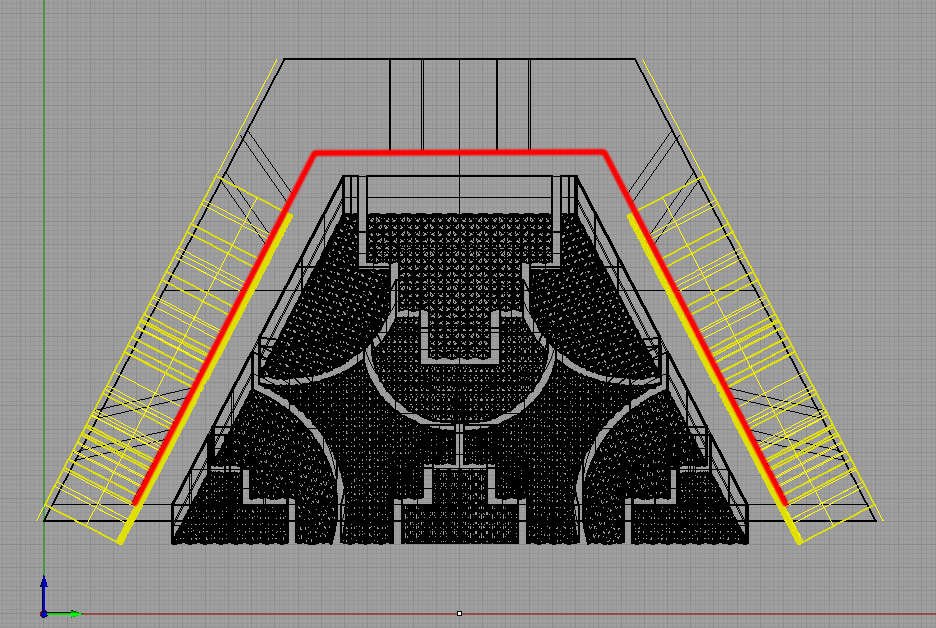 Wireframe side view of the pyramids, with the side of the stone cells in yellow, and the thickness of the side stones in red.
Wireframe side view of the pyramids, with the side of the stone cells in yellow, and the thickness of the side stones in red.
The pyramid models are nowhere near done yet, but I’ll throw in a couple of renderings just to show where they are at this moment in time. Keep in mind that the purpose of these models is to be output and cast, so I’m not bothering with making the models ‘look’ like gold or anything else. The renderings do give a good sense of what the foils look like in the backs of the cells.
I’ll put up another blog post when I get the models done, and at various points as the project progresses.
Regards,
Brian
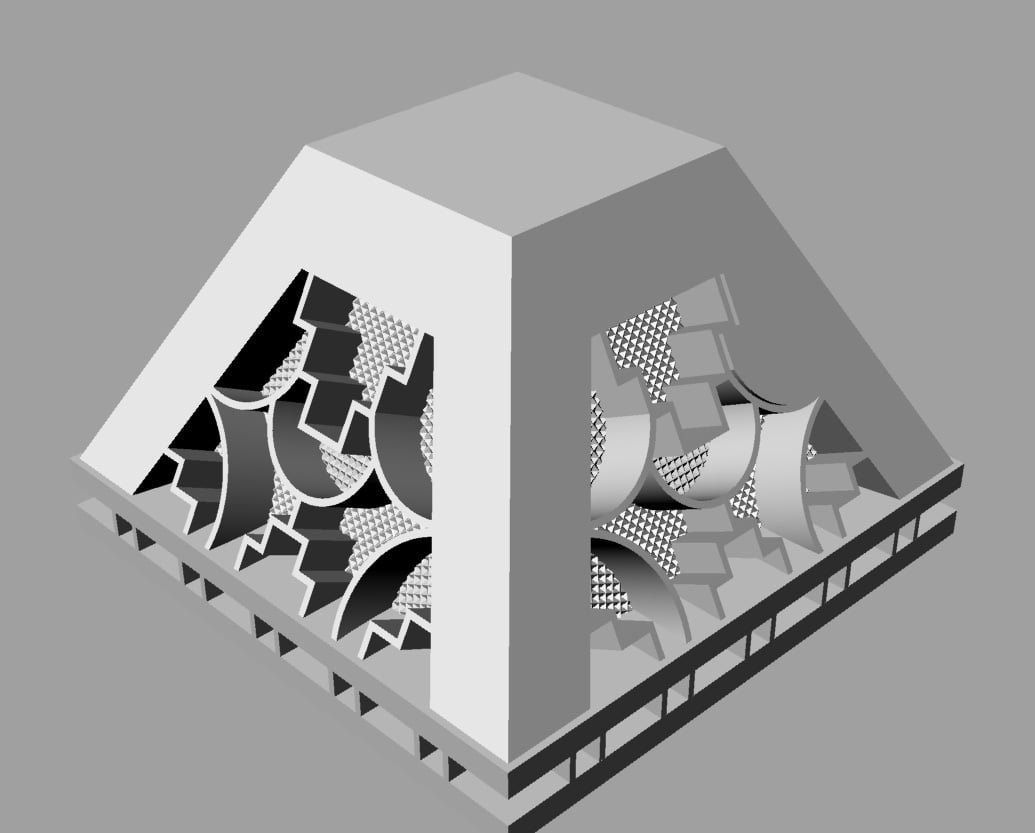 Rendered diagonal view of unfinished pyramid model.
Rendered diagonal view of unfinished pyramid model.
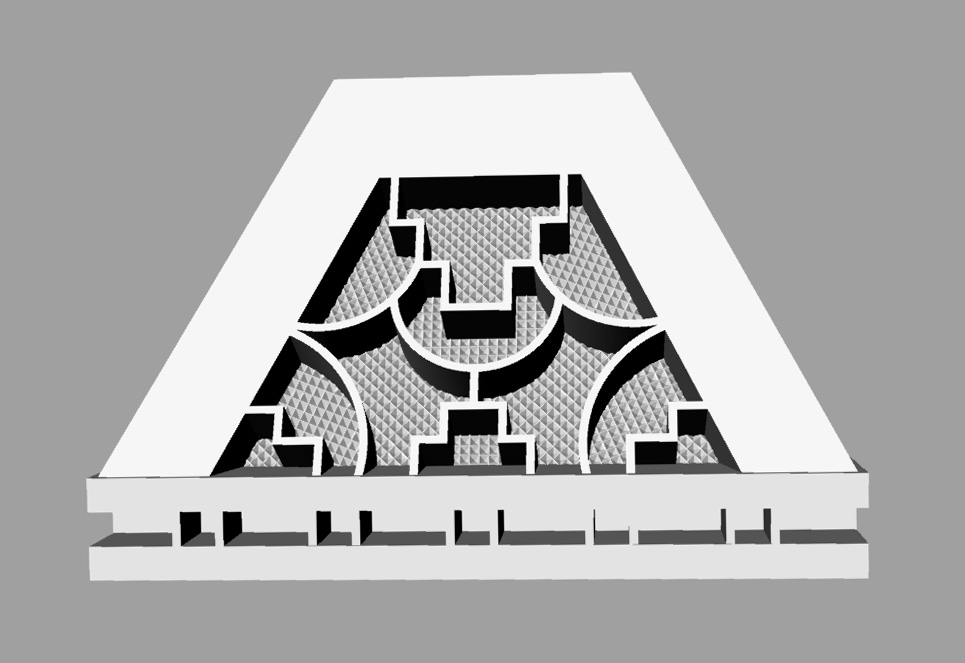 Rendered side view of unfinished pyramid.
Rendered side view of unfinished pyramid.
Latest posts by Alberic (see all)
- Ames Lathe rebuild, part 1 of (Ghu only knows…) - September 10, 2015
- Digital Saxons - January 8, 2013
- More Watchmaker’s Bench Press - November 21, 2011

You must log in to post a comment.